Whether or not you are a plant lover, the chances are that you’ve heard of the otherworldly air plants. Yes, these fascinating plants grow in the air, with no soil or container needed, which may explain why they have become so popular in the last few years.
Also known as tillandsia, air plants are among the most demanding plants, but they are vulnerable to misconceptions about their care. They grow a bit differently than other house plants, demanding patience and some study to be successful.
This post will discuss air plants, including what they are, how to plant them, and the best air plants care tips.
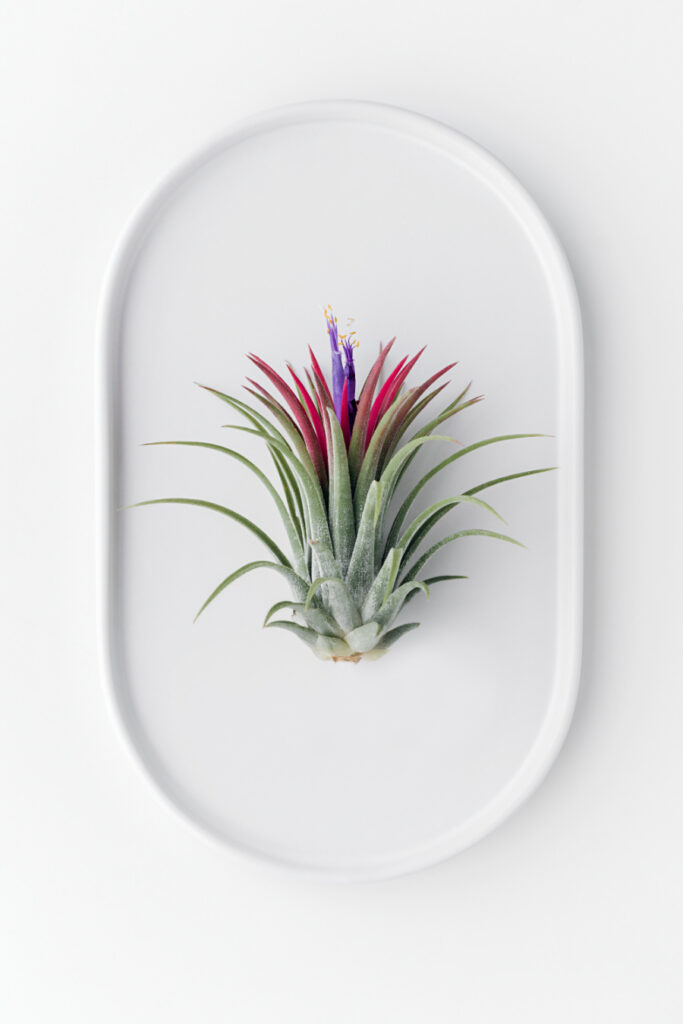
Feel free to jump ahead!
What are air plants?
Tillandsia is a low-maintenance plant that gets nutrients from the air around them. These magical plants are epiphytes, which naturally grow on other plants, usually on tree branches.
Although the word ‘air plant’ is associated with plants in the Tillandsia genus, hundreds of species and varieties of air plants span different plant families. Tillandsia usually has slender triangle-shaped or strap-shaped leaves that grow in a rosette pattern.
If you live in an area that experiences drought, you should choose the air plants with silver foliage; they are more drought tolerant than those with greener foliage. There are also colorful air plant species like Tillandsia maxima with coral leaves.
Most species of air plants offer attractive, tubular, or funnel-shaped flowers and grow as fuzzy, furry, spiky, and trailing plants. So, which air plant is perfect for your home or garden? Let’s see below.
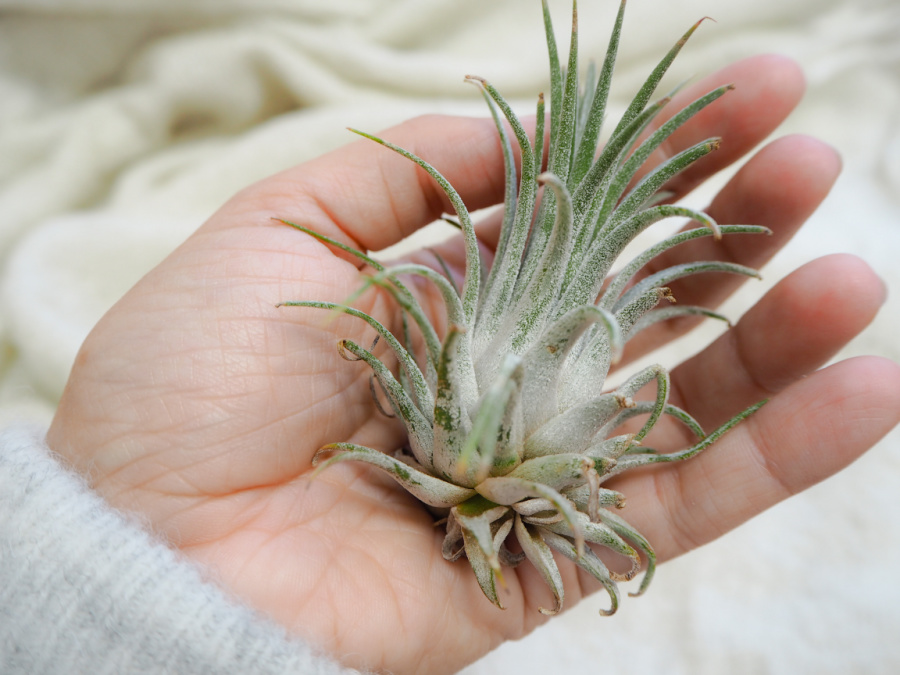
Choosing air plants
Choosing an air plant for your space is undoubtedly an overwhelming task. You have more than 600 different air plants to choose from, which makes it hard to know the plant that fits your needs.
To help you narrow down your search, here are some of the commonly chosen varieties:
- Tillandsia Lonantha – native to Mexico and Central America
- Tillandsia Maxima
- Tillandsia Xerographica – native to Mexico, El Salvador, and Guatemala
- Tillandsia Andreana – native to Columbia
- Tillandsia Aeranthos
- Tillandsia Bulbosa – originates from Central America
- Tillandsia Didisticha – native to South America
- Tillandsia Gardneri – native to Columbia, Brazil, and Venezuela
- Tillandsia Tectorum
- Tillandsia Stricta – native to the Southern United States
These are some of the most common types of air plants. You can view more types of these unique plants here.
How do I plant air plants?
Before diving into the air plant care tips, let’s first look at how you should plant these amazing plants. Unlike most other plants, air plants don’t need potting soil or a container to grow.
Here is how to properly plant your air plants in your home:
- Don’t plant your tillandsia in the dirt. Air plants are epiphytes, meaning they grow on other plants and not in the ground
- Avoid placing your air plants in an enclosed terrarium or glass globes. A closed container will keep them too wet, leading to fungal disease or rot. Such containers also limit the air circulation, inhibiting their ability to feed
- Instead of an enclosed vessel, place your air plants in creative places or containers, such as a shallow bowl or vase filled with sand or rocks. You could even put them in a small container and hang them on the fridge using a magnet.
Once you plant your air plants, you can proceed to care for them as follows.
How do I care for my air plants?
Now that you know what air plants are, the various types of these magical plants, and how to plant them, we’ll go through how to care for them. We’ll cover everything, from how to water these plants to how to soak and feed them with fertilizers.
This way, you’ll be well equipped with everything you need to keep your plants thriving all year round.
Here are the air plants care tips:
Care tip #1: Light requirements
Light is one of the most important things any living thing needs, and air plants are no different – they need bright, indirect light to thrive. If you plan on keeping your air plants as indoor plants, you’ll want to ensure that they are near an adequate light source.
It’s recommended that you place your air plants in rooms with eastern or southern-facing windows – illuminated mainly by the sun for the better part of the day. Avoid placing your plants on the western side of your house because it receives hot and intense light late in the day.
Also, having high humidity in your living space means that your plants can tolerate more light. A general rule of thumb is that you mist your plant daily or at least twice a week if you place it in a place it’s receiving loads of light.
An ideal place in your house will be your bathroom if it receives enough light. The humidity from your shower is ideal for regular misting of your plants.
If you live in a light-starved home, you can still buy air plants, provided you can place them near fluorescent light or spectrum light – no further than 3 feet away. If you use fluorescent or artificial light, your plants need at least 12 hours daily to remain healthy and alive.
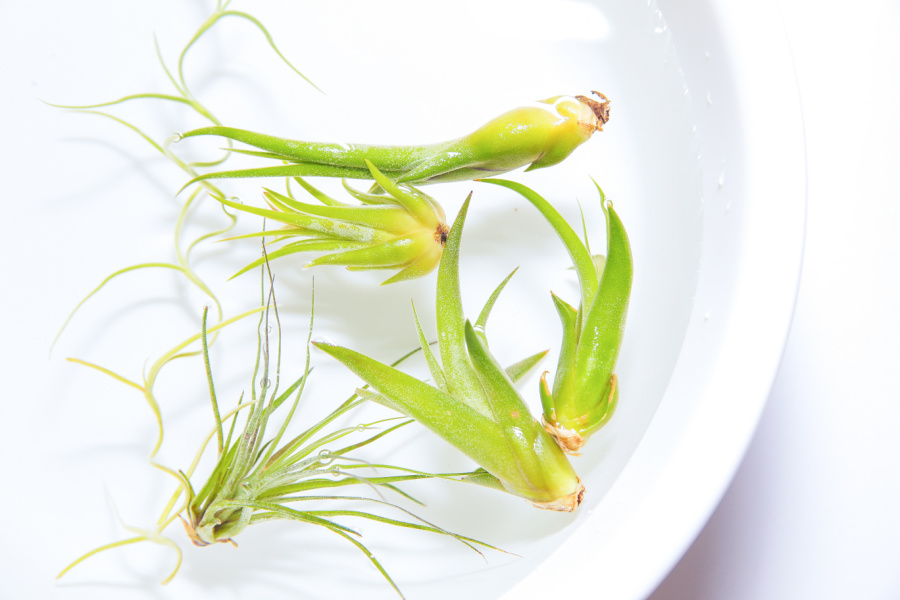
Care tip #2: Watering your air plants
One of the most significant factors you must learn when caring for air plants is the watering schedule. They don’t need rainwater or distilled water to thrive – plain tap water can suffice.
Your air plants need frequent watering – at least 2-3 times per week, especially if you live in hot, dry environments or during the summer. Water your air plants less often if you live in a cool, humid environment or during winter.
Unlike succulents that draw water from their internal reserves or terrestrial plants that get replacement water from their roots, air plants can’t get any water. However, the plant may develop fuzzy leaves (trichrome), a coating of cells that helps your plants absorb more water and nutrients.
For proper watering:
Give your air plants a proper soak by submerging the plant upside down in a pot or cup of water. An overnight soak is recommended so that your air plant absorbs enough moisture.
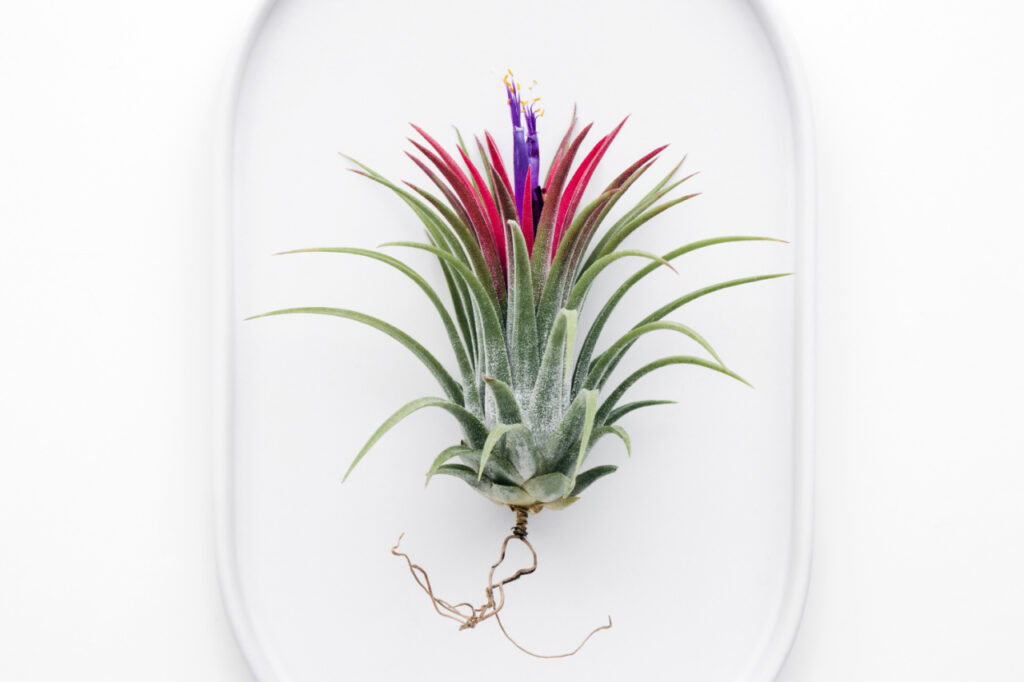
Care tip #3: Air circulation
Air is another crucial variable for the survival and healthiness of your air plants. Experts recommend giving your air plants about 4 hours of good air circulation after watering.
And although air plants thrive in containers, you shouldn’t display them in enclosed containers. Also, you should ensure that the container is completely dry before restoring the plant to boost air circulation.
Care tip #4: Temperature requirements
Air plants are found in various temperatures but thrive in temperatures ranging from 50-90 degrees Fahrenheit. If you live in an environment with freezing conditioners, ensure your plants are safe indoors.
Much or less temperature will likely lead to air plants’ leaf damage.
Care tip #5: Fertilizer requirements
Like other plants, air plants need vital minerals like Nitrogen, Potassium, and Phosphorus to survive and thrive. However, fertilizers used for these magical plants are slightly different from regular fertilizers, mainly because they don’t have soil to break down nitrogen.
Experts recommend using Bromeliad fertilizer (17-8-22) at least twice a month – it’s perfect for reproduction and blooming. Also, nitrate and ammoniacal nitrogen are ideal for air plants.
However, you don’t have to use fertilizer if you use aquarium or pond water – these waters are natural fertilizers that can revive distressed plants.
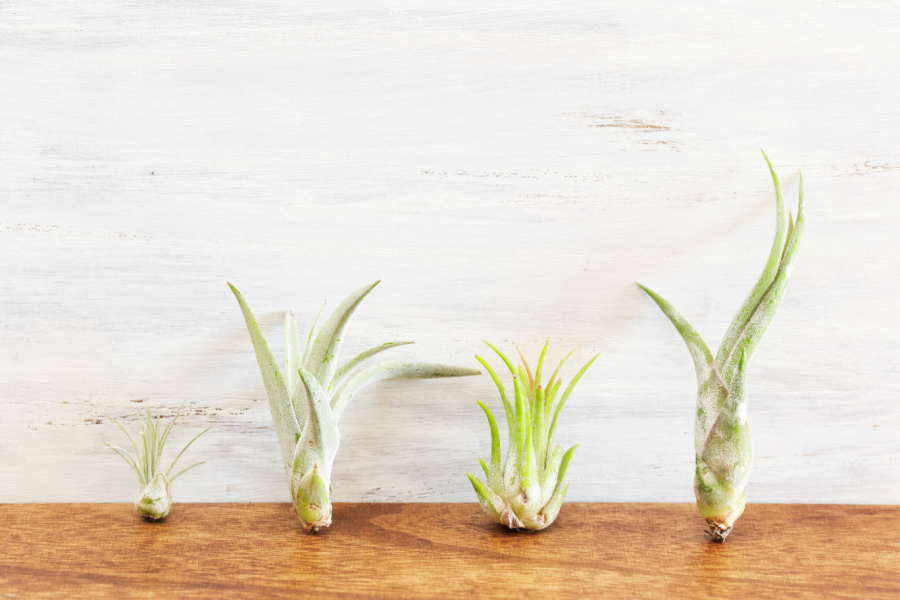
Care tip #6: Trimming your air plants
With time, your new air plants develop leaves and lose the old ones. You can trim the brown or dead leaves of your plants using a pair of scissors, doing it at an angle that gives the end of the leaf a natural appearance.
When you order air plants, the chances are that they’ll come with roots intact, and you may remove them if you wish. The primary purpose of these roots is to anchor the air plants to their host and can be trimmed if you wish to plant them differently.
Air plants growth cycle
Your air plant produces 2-8 pups or offsets that bloom, usually from mid-winter through mid-summer, based on the type of air plant. If you leave your air plant to clump, trim the mother plant’s leaves as she begins to dry up.
If you want to remove the offsets, they should be at least 1/3 to ½ the size of the mother plant. To separate the pups from their parent plant, hold the base of the plants (mother and pup) and twist in a downward motion.
How long do air plants live?
Another essential thing to learn about how to care for air plants is how long they live. This will avoid disappointments when the plant does not do well because it’s nearing the end of the life cycle.
Your air plants can live for several years, with the specific time depending on the environment and air plant variety. Generally, the plant should live for about three to five years if it’s well-cared for.
The bottom line
It’s no secret that air plants are among the best and most low-maintenance plants you’ll ever find. They don’t need soil or a container to grow and provide you with innumerable benefits ranging from improving the appearance of your home to enhancing your wellbeing.
This post discusses everything you need to know about these fascinating plants, including what they are, how to choose the best of them, and the care tips for these plants.
Leave a Reply